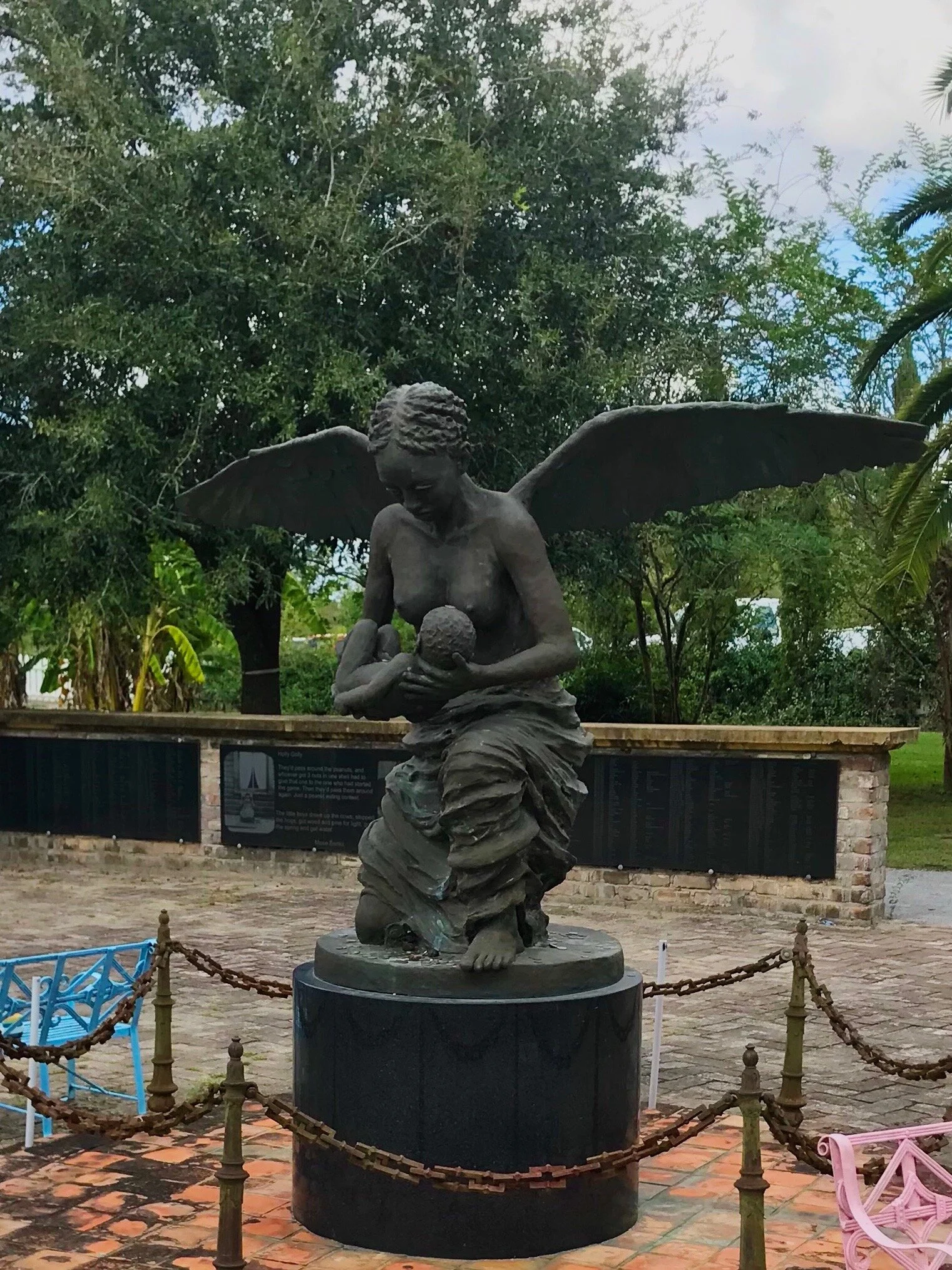In this week’s episode of About South, we travel to St. John the Baptist Parish in Louisiana to meet with Ashley Rogers, executive director at the Whitney Plantation museum and memorial site, to discuss the history of plantation enslavement in the U.S. South. As the only plantation museum in Louisiana with a focus on slavery, its rare and vital approach in exhibiting the area’s gruesome agricultral industrial complex sheds light on one of the most painfully minimized eras of American history.
The memorial to enslaved children at Whitney Plantation.
Whereas most plantation “museums” in the U.S. South concentrate on white ownership and romanticized plantation culture, the Whitney Museum turns its undivided attention to the accuracy of the era -- forced labor, human trafficking, and brutal living conditions. In its 150 year operation, 350 enslaved individuals were sent “down the river” to this Louisiana sugar and ricing plantation, and according to Ashely, this was considered by many to be a death sentence. Between backbreaking work, infectious disease, malnutrition, and the unbearable heat, the mortality rate was exceptionally high.
The Antioch Baptist Church, which was moved to the site, but founded by formerly enslaved men following emancipation.
Contrary to popular opinion, however, not much changed in the post-Civil War era. Many of those individuals remained at the Whitney Plantation even after emancipation, working the same jobs for very little pay. Even with the introduction of labor laws in the 1930s, few could afford to leave. Generation after generation remained at the plantation, and the slave cabins, as Ashely chillingly notes, remained occupied by those generations until 1975 -- a full 110 years after the war.
The cabins at Whitney, where descendants of the formerly enslaved lived until the mid 1970s.
Now, the plantation looks very different. There are trees, which before would have been cut down to make room for more crops. There are memorials, which honor the men and women who lived and died at the hands of a brutal agricultural operation fueled by racism and greed. But most importantly there are conversations, often overhead by our guest as she guides thousands of visitors through the museum. Something about the space allows people to be vulnerable, Ashley says, and it shows in the comments and stories they share with one another, often across races and experiences. “Often what we do in this country is bottle that up. People get scared to talk about race . . . but there is something about the experience of being here. I’ve seen people open up,” she says.
Whitney Plantation holds many plans for the future, and if you’re in the area, be sure to visit. Their bold and sensitive approach to displaying history is worth every minute of your time.


